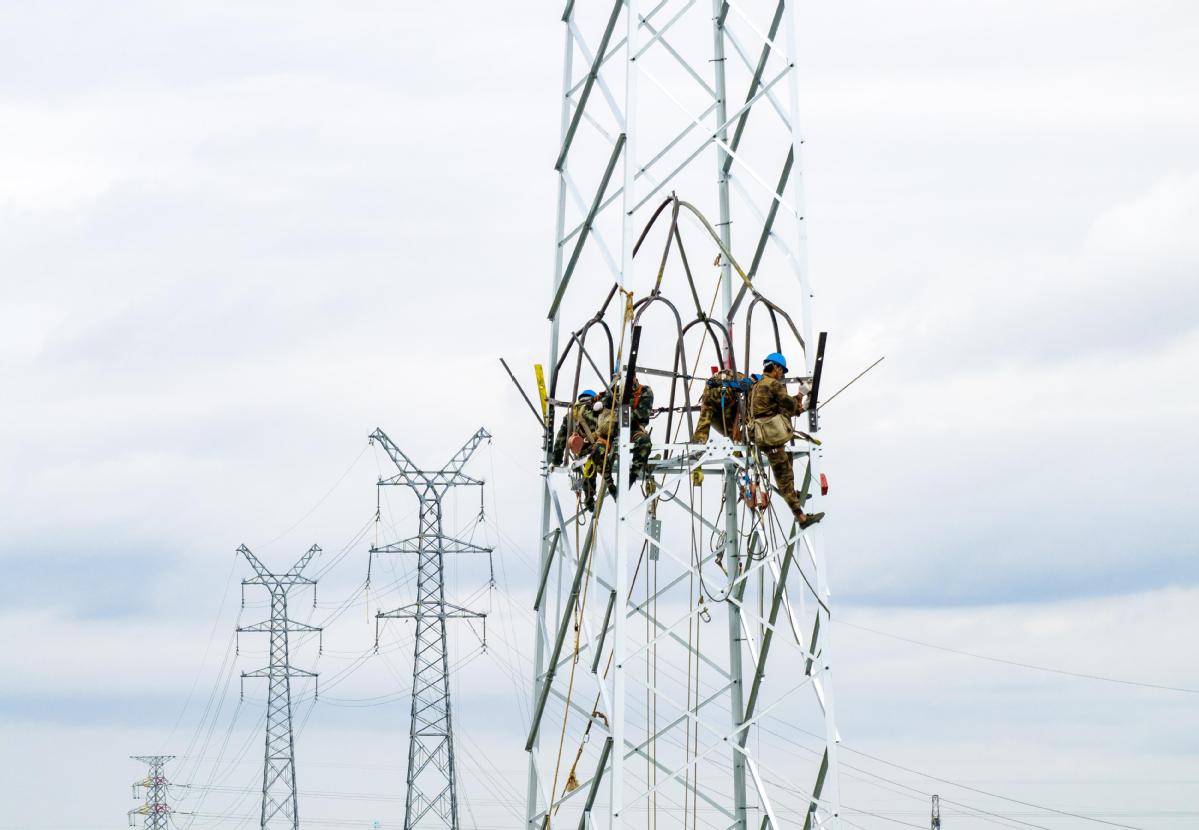
State Grid employees inspect a transmission tower in Taizhou, Jiangsu province, in September. [TANG DEHONG/FOR CHINA DAILY]
China's rapid expansion of new infrastructure is driving significant increases in power demand, particularly in the 5G, artificial intelligence, and electric vehicles sectors, according to industry experts.
The increase in computing power, for example, is expected to become a significant driver of electricity production in the future, and efforts must be made to ensure a stable power supply, said Zhang Zhigang, executive chairman of State Grid Corp of China.
Electricity demand is expected to climb as China's economy continues to show medium to high-speed growth, especially in sectors such as advanced manufacturing, industrial internet, artificial intelligence, and computing, Zhang said during the 2024 New Power System Development (Chongli) Forum held by the China Electricity Council in September.
According to the council, electricity consumption for internet data services, including big data processing, cloud storage, cloud computing and cloud processing based on internet technology, saw an average annual growth rate of 28 percent from 2018 to 2023, and further increased by 33 percent during the first six months of this year
A key factor behind China's increased power consumption is the country's rapid economic expansion, which is driving the higher energy demand, it said.
According to Zhang, China's renewable energy capacity has seen significant growth, with a 35.5 percent year-on-year increase in wind and solar power capacity in 2023, reaching 226 million kilowatts within State Grid's operational area.
From January to August, an additional 130 million kW of renewable energy capacity was added, reflecting a 12.6 percent increase, he said.
"With renewable energy increasingly integrating into the grid at a large scale, it is necessary to ensure the safe and stable operation of the grid," he added.
The National Energy Administration has said previously that further efforts are in the pipeline to speed up power grid construction and enhance the power transmission mechanism in the country, as China's power grid faces increasing stability challenges with the share of electricity generated from intermittent new energy sources rising.
To improve the grid's capacity to accommodate power from new energy sources, the administration has been stepping up efforts to accelerate the construction of grid projects. It is prioritizing the advancement of 33 key projects this year across the nation, including the Sichuan-Chongqing ultra-high voltage alternating current project, while speeding up the initiation of construction on 37 other key projects.
The government will step up efforts to enhance the grid's capacity for flexible power supply scheduling and improve interprovincial power-sharing capabilities, said Du Zhongming, head of the electricity bureau of the administration.
According to Zhang from State Grid, technological innovation is the key to building a new power system and the company has allocated 180 billion yuan ($25.6 billion) in research and development, improving scientific research frameworks and disciplines to stimulate innovation during the 14th Five-Year Plan (2021-25).
Zhang also stressed the critical role of energy storage in the new power system.
State Grid is advancing large-scale energy storage applications, with 93.97 million kW of pumped storage capacity, including 7.27 million kW in Hebei province alone, he said.
The company saw its annual grid investment surpass 600 billion yuan for the first time this year, 71.1 billion more than that of the previous year. This is part of the company's efforts to accelerate the construction of a new type of power system.
The additional investment has been primarily allocated to the construction of ultra-high voltage power transmission projects, strengthening the connection between county-level grids and the main grid and upgrading grid digitalization and intelligence, said the Beijing-based State-owned enterprise.
Ultra-high voltage transmission lines refer to power transmission cables operating at greater than 800 kilovolts of direct current, or 1,000 kV of alternating current. Compared with traditional transmission lines, ultra-high voltage lines not only increase transmission capacity and extend transmission distances, but also reduce transmission losses.
Increasing investment will further facilitate power supply and help the transmission of large wind and solar power bases in western regions while improving services for public welfare, it said.
Source: By Zheng Xin, chinadaily.com, Oct 09, 2024 [https://www.chinadaily.com.cn/a/202410/09/WS6705e331a310f1265a1c69eb.html]

